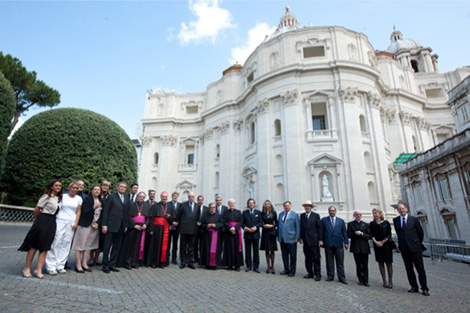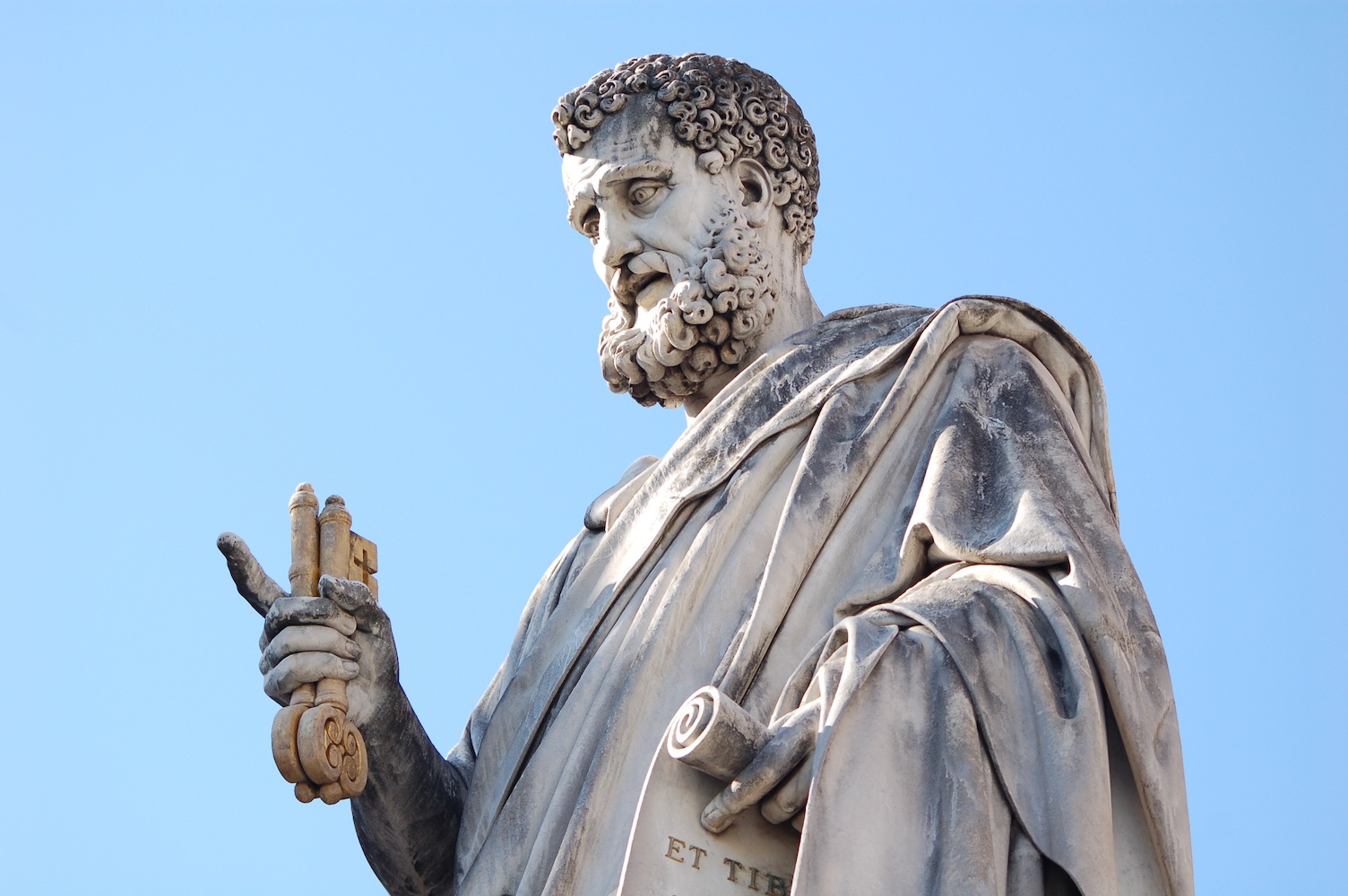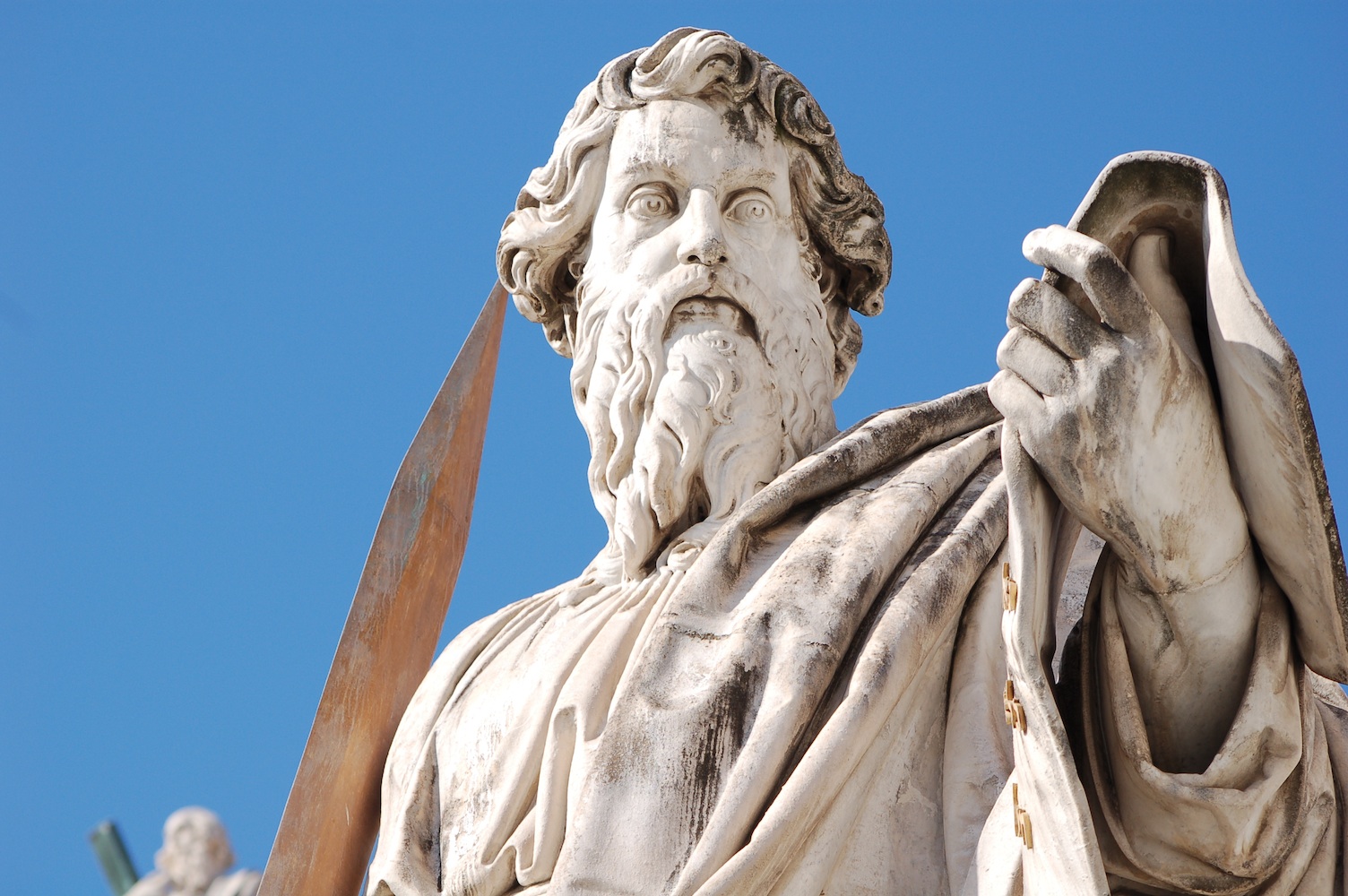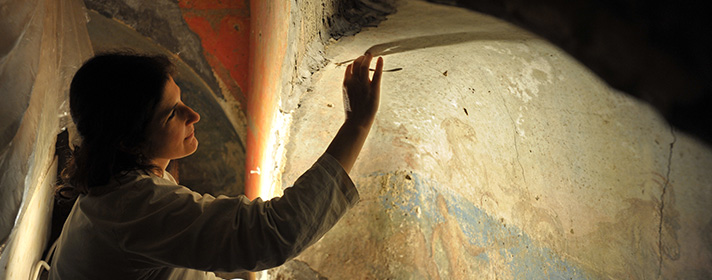The Festival, like all activities of the Fondazione Pro Musica e Arte Sacra, is aimed at sensitizing the public to its institutional aims: to safeguard, preserve, promote and develop the cultural patrimony present in Italy and to raise funds for restoration projects. With the help of its supporters and sponsors, since its foundation in 2002 the Fondazione Pro Musica e Arte Sacra has been able to support a series of 24 increasingly important restoration projects (further details can be found on the page The Foundation).
Those who contribute to the Foundation in 2020 (and thus participate in the 19th International Festival of Sacred Music and Art), support the ongoing restoration projects of the Fondazione Pro Musica e Arte Sacra.
During the 2019-2024 period, the Fondazione Pro Musica e Arte Sacra will be supporting the following restoration and musical projects:
- the XIX International Festival of Sacred Music and Art in Rome and the Vatican that will take place in Barcelona from 12 until 14 September 2020 in Barcelona and from 14 until 18 November 2020 in Rome and the Vatican with the Vienna Philharmonic as orchestra “in residence”
- with the Vienna Philharmonic we have started 2018 a great project dedicated to Anton Bruckner, since 2024 will be the two-hundredth anniversary of his birth in Ansfelden, on 4 September 1824. To celebrate this important and historical date, over a period of seven years – from 2018 to 2024 – the Vienna Philharmonic Orchestra conducted by Christian Thielemann will execute the entire series of Bruckner’s symphonies, performing every year in one of the most important cathedrals of Europe.
The inauguration concert was held on 3 June 2018 in St. Florian (Austria) and Bruckner’s second symphony on 2 May 2019 in the beautiful Berlin Cathedral (Germany).
- the restoration of the Chapel under the Altar of Confession in the Papal Basilica of San Giovanni in Lateran
The front facade of St. Peter's, a well-known aspect all over the world, has been restored in occasion of the Holy Year 2000. Since then the Fabric of St. Peter's has promoted restoration of the other exterior walls of the Vatican Basilica with an enormous surface. The restoration is urgent because breaks and water infiltrations cause the risk of elements breaking down or of damages in the Basilica's interior.

The fourth lot of the restoration works, on which the Foundation's efforts are now focused (since 2010 it has already supported the Fabric of St. Peter's in financing the third lot of works) regards a part of the Basilica which has been planned in the form of a Greek cross by Michelangelo in the 16th centuryand precisely the walls of the Basilica’s apse.
The two statues depicting the Apostles, St Peter and St Paul, standing in the square before the majestic façade of the Vatican Basilica were commissioned by Pope Gregory XVI to replace the two existing 15th-century statues, which now appeared rather small in proportion to the massive bulk of the façade combined with Bernini's portico.


The replacements, sculpted from marble by two pupils of Canova – Giuseppe De Fabris (1790-1822) made the St Peter and Adamo Tadolini (1788-1868) the St Paul - would have to wait until 1847-1849, under the papacy of Pius IX, before being set up on their high pedestals bearing the heraldic emblems of the Pope and the Fabbrica di San Pietro.
The works are currently in a poor state of preservation with their surfaces covered inmicrobial colonies and both loose and solid deposits. The gilding is almost completely worn away and the internal pins are showing signs of rust.
The painstaking restoration of the exterior of St Peter's, commenced by the Fabric of Saint Peter on the eve of the Holy Year of 2000 within the framework of a complex plan of protection and refurbishment, has been resumed and carried forward with renewed commitment and meticulous care over the last seven years with the support of the Fondazione Pro Musica e Arte Sacra.
After the restoration of themain façade in 1999, plans were developed for the necessary work on the south, west and north sides, which are about 46 metres in height and present a total surface area of over 35,000 square metres.
Restoration of the south façade was completed in three successive phases of painstaking work over just five years (April 2007 - May 2012).
The third phase, regarding the central element of the basilica designed on a Greek cross plan in the 16th century by Michelangelo, was carried out with support from the Fondazione Pro Musica e Arte Sacra, which is also funding the restoration of the west façade including the external apse of St Peter's, commenced in 2012 and scheduled for completion this year.
The by no means easy work is carried out by highly qualified restorers under the technical and scientific supervision of the Fabric of Saint Peter. Their patient, silent and untiring efforts are flanked by those of the "Sanpietrini" responsible for all the masonry work, including removal of the old tiled roofs of the attic cornice and entablature, and the subsequent installation of slabs of travertine to protect the structure as a whole.
The necessary diagnostic investigations have also been carried out with photographs taken (before, during and after the restoration) and surveying with a laser scanner.
This graphic and photographic documentation was completed with all the information regarding preservation of the materials and identification of the various kinds of deterioration present on the stone and attributable to chemical, physical and mechanical causes, thus serving as a basis for the analysis and mapping of decay and subsequent representation of the various operations of restoration.
Jets of water were used to clean the travertine surface and the more stubborn black incrustations were removed by means of micro-sandblasting at moderate pressure with inert materials of reduced hardness in order to preserve the patina built up over time (the JOS system already tested and used in the restoration of the main façade).
The restoration also constituted a unique and unrepeatable opportunity for knowledge, not least through the close examination of architectural details located in the higher parts of the basilica.
It is therefore hardly surprising that the recent work undertaken by the Fabric of Saint Peter made it possible for the first time to identify and examine certain elements of Michelangelo's architecture with wonderful figural sculptures whose sophisticated elegance is not visible from below.
While the restoration of the west side, corresponding to the rear of the basilica, is nearing completion, the Fabric of Saint Peter, once again with the support and collaboration of the Fondazione Pro Musica e Arte Sacra, has developed plans for the continuation of operations also on the 16th-century north side facing the area known as the Via delle Fondamenta.
This restoration will involve a surface area of approximately 6,800 square metres and take about two years (2014–16).
It is interesting to note that the latter highly demanding restoration project was launched in 2014, the year marking the 450th anniversary of the death of Michelangelo Buonarroti (6 March 1475 – 18 February 1564).
It was in fact Michelangelo that designed and built this part of the basilica's exterior (apart from the minor stretch at the left end) between 1546 and 1564.
It was during the pontificate of Julius III (1550–55), Paul IV (1555–59) and Pius IV (1559–65) that Michelangelo completed the apse and the oblique sides and began the construction of the attic and the foundations of the linear sides of the exterior, which were completed in 1590 by his successor, the architect Giacomo Della Porta (1533–1602).




